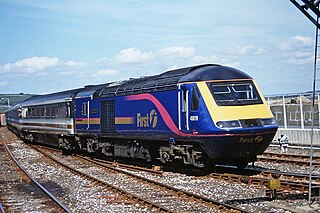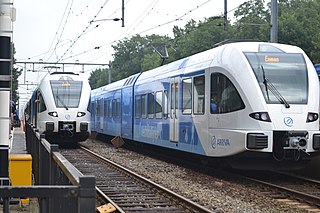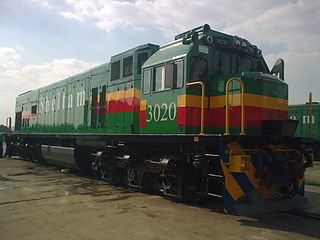
The Ufton Nervet rail crash occurred on 6 November 2004 when a passenger train collided with a stationary car on a level crossing on the Reading–Taunton line near Ufton Nervet, Berkshire, England. The collision derailed the train, and seven people—including the drivers of the train and the car—were killed. An inquest found that all railway personnel and systems were operating correctly, and the crash was caused by the suicide of the car driver.

The Southall rail crash occurred on 19 September 1997, on the Great Western Main Line at Southall, West London. An InterCity 125 high speed passenger train (HST) failed to slow down in response to warning signals and collided with a freight train crossing its path, causing seven deaths and 139 injuries.
The 1996 Stafford rail crash occurred on 8 March 1996 when a Transrail freight train travelling from Mossend, North Lanarkshire, to Willesden, North London, derailed after an axle on a wagon carrying liquid carbon dioxide failed due to fatigue at Rickerscote 1.4 miles (2.2 km) south of Stafford on the West Coast Main Line. Almost immediately after the derailment, a Travelling Post Office mail train hauled by a Rail Express Systems British Rail Class 86 electric locomotive collided with a section of the derailed freight train on the adjacent line and fouled the path of the TPO mail train. One person, a mail sorter, was killed in the crash and twenty others including the driver of the mail train were injured.

The Gainsborough line is the current marketing name of the Sudbury branch line, a railway branch line off the Great Eastern Main Line in the east of England, that links Marks Tey in Essex with Sudbury in Suffolk. It is 11 miles 53 chains (18.77 km) in length and single-track throughout. The line's Engineer's Line Reference is SUD.

The Breckland line is a secondary railway line in the east of England that links Cambridge in the west to Norwich in the east. The line runs through three counties: Cambridgeshire, Suffolk and Norfolk. It takes its name from the Breckland region of Norfolk and passes through Thetford Forest.

Bures railway station is on the Gainsborough Line, a branch off the Great Eastern Main Line to Sudbury, in the East of England, serving the village of Bures, which straddles the counties of Essex and Suffolk.

In Lockington, England on 26 July 1986, the 09:33 passenger train from Bridlington to Kingston upon Hull on the Hull to Scarborough Line struck a passenger van on a level crossing.
There have been a number of train accidents on the railway network of Victoria, Australia. Some of these are listed below.
The railways of New South Wales, Australia have had many incidents and accidents since their formation in 1831. There are close to 1000 names associated with rail-related deaths in NSW on the walls of the Australian Railway Monument in Werris Creek. Those killed were all employees of various NSW railways. The details below include deaths of employees and the general public.
This article lists significant fatal, injury-only, and other accidents involving railway rolling stock, including crashes, fires and other incidents in the Australian state of South Australia. The first known incident in this list occurred in 1873 in Smithfield.

The Dalfsen train crash occurred on 23 February 2016 when a passenger train collided with a tracked elevated work platform on a level crossing at Dalfsen, Overijssel, Netherlands. One person was killed and six were injured, one seriously.

On 4 January 2018, a passenger train operated by Shosholoza Meyl collided with a truck at a level crossing at Geneva Station between Hennenman and Kroonstad, in the Free State, South Africa. The train derailed, and seven of the twelve carriages caught fire. Twenty-one people were killed and 254 others were injured.








